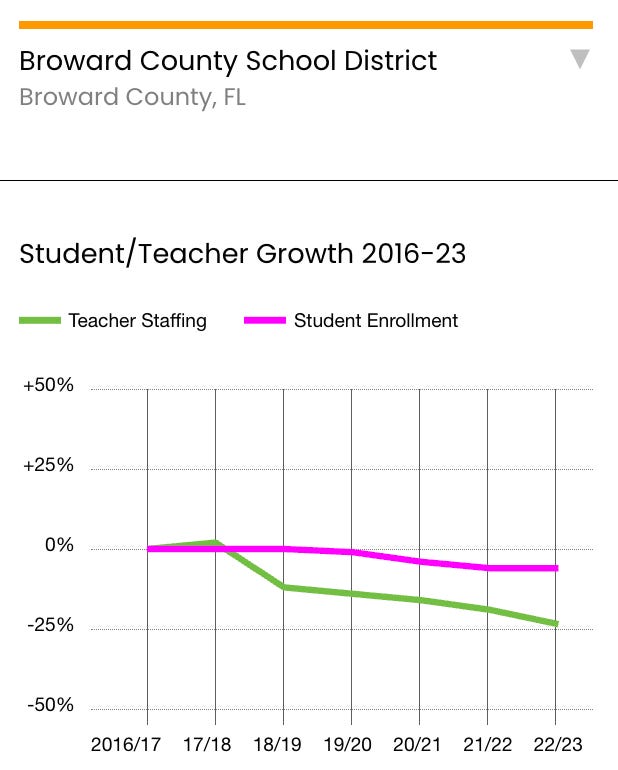Which districts *actually* have teacher shortages?
Looking for districts with higher student-teacher ratios
As I wrote on Wednesday, most school districts are carrying a surplus1 of teachers and will need to find a way to pay for them in the years ahead. That’s true nationally, in 41/50 states, and three out of every four districts.
But it’s not true everywhere. You can zoom into The 74’s map and focus on the areas in orange, where districts have a higher student-to-teacher ratio than they did pre-pandemic.
Those districts are particularly concentrated in states like Nevada, Alaska, Louisiana, and Florida.
Some of these districts simply can’t hire as fast as they’re growing. For example, here’s what the enrollment and teacher trends look like for St. Lucie County in Florida. It serves about 45,000 kids, and that number has been growing over time (in pink). And yet, its teacher count (in green) is lower than it was pre-pandemic. The district’s student-to-teacher ratio has gone from about 17:1 up to 19:1.
Other districts might be serving fewer students, but are losing teachers even faster. For example, here’s Broward County, one of the largest districts in the country. It has lost about 6% of its students, but its teacher count is down 24% over the same time period.
I offer these as examples of places that really do have a shortage of teachers, in the sense that they literally have fewer teachers.
Again, this isn’t the national story or what’s been happening in most places. But about one-quarter of districts have higher student-teacher ratios than they did pre-pandemic, and it’s important to be precise about where the problems are and what might be causing them.
I’m using the term “surplus” here in a strictly budgetary sense. I don’t mean to imply that districts have too many teachers, just that districts are carrying staff positions that they may not be able to afford in the coming years.





